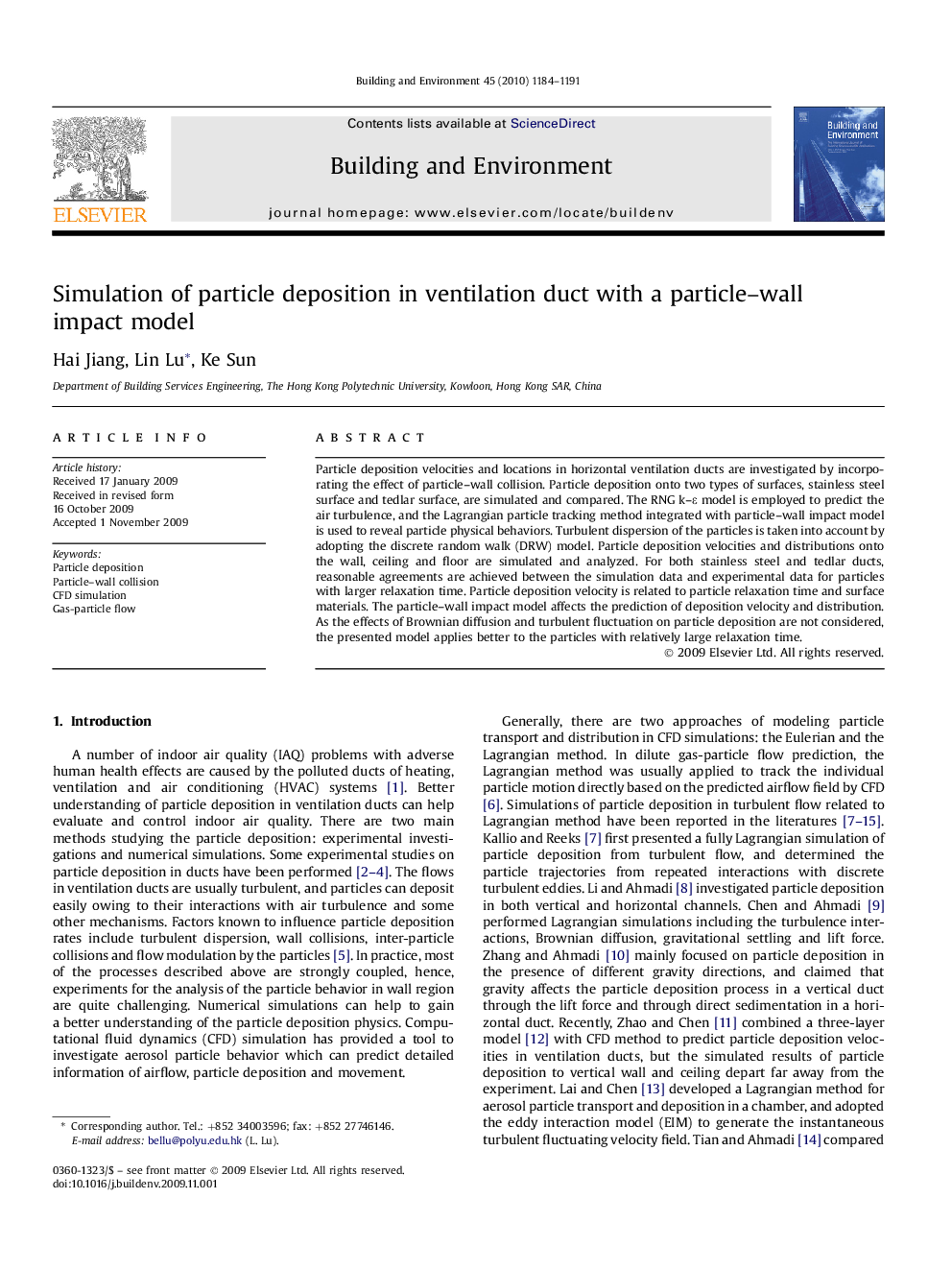| Article ID | Journal | Published Year | Pages | File Type |
|---|---|---|---|---|
| 248949 | Building and Environment | 2010 | 8 Pages |
Particle deposition velocities and locations in horizontal ventilation ducts are investigated by incorporating the effect of particle–wall collision. Particle deposition onto two types of surfaces, stainless steel surface and tedlar surface, are simulated and compared. The RNG k–ɛ model is employed to predict the air turbulence, and the Lagrangian particle tracking method integrated with particle–wall impact model is used to reveal particle physical behaviors. Turbulent dispersion of the particles is taken into account by adopting the discrete random walk (DRW) model. Particle deposition velocities and distributions onto the wall, ceiling and floor are simulated and analyzed. For both stainless steel and tedlar ducts, reasonable agreements are achieved between the simulation data and experimental data for particles with larger relaxation time. Particle deposition velocity is related to particle relaxation time and surface materials. The particle–wall impact model affects the prediction of deposition velocity and distribution. As the effects of Brownian diffusion and turbulent fluctuation on particle deposition are not considered, the presented model applies better to the particles with relatively large relaxation time.
